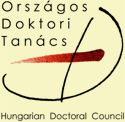 |
|
| Thesis topic proposal |
| |
Description of the research topic:
In the vehicle and automotive industry there is an increasing demand for the reduction of CO2 emissions, which requires new generations of high strength steels. The high yield strength is originated with the combination of alloying elements, rolling and heat treatment. The produced special microstructure resulting high strength and good formability properties is irreversibly changed by the welding heat cycle. In the weld and HAZ there is a significant reduction in strength, ductility, and toughness, although by the application of special welding technology the deterioration of mechanical properties can be minimized. It is not sufficient to optimize the welding technology to the ideal static strength, but other characteristics relevant for the vehicle and automotive applications (fatigue resistance, impact safety) should be also considered.
The research should focus on:
• The new generations of high strength steels and their suitability for welding should be analysed;
• The effect of the applicable welding technologies (temperature field, weld shape, mechanical properties) on the selected steel(s) should be investigated by finite element modelling (FEM);
• The HAZ properties must be analysed by physical simulation for the relevant welding heat input range of the selected technologies;
• A detailed welding experimental plan should be set up and carried out according to Design of Experiments (DOE);
• The welding technology should be optimized by considering the static, dynamic and cyclic material properties in a complex way;
• Microstructural characterization should be performed by conventional and advanced microscopic methods, the relationship between mechanical properties and microstructure should be investigated.
Research conditions: welding equipment (GMAW, RSW), numerical modelling (SYSWELD), physical simulation (Gleeble 3500 thermo-mechanical physical simulator) and materials investigations (MTS electro-hydraulic universal material testers, hardness testers, instrumented impact tester, microscopes) are available at the University of Miskolc, and at the cooperating institutes.
Industrial background: the Institute of Materials Science and Technology provide a wide cooperation network in the industrial area (e.g. Fortaco Co., Budai Benefit Ltd., Rehm Hegesztéstechnika Ltd., Ten Slovakia Ltd., automotive companies (e.g. Audi).
Part-time education abroad: the actuality and importance of the research work offer the possibility of part time research abroad (University of Oulu, Finland).
Additional expectations:
• Language: an adequate knowledge of the English language is essential for the study of the literature
• Preliminary studies:
good or excellent grade in the engineering field (MSc),
professional knowledge in the field of material science and material technologies (especially welding),
experience in the use of (CAD, CAM, FEM) software is advantageous.
Recommended literature to the research work:
• Bhadesia, H. K. D. H; Honeycombe, R. W. K.: Steels Microstructure and Properties, Third Edition, Elsevier Linacre House, Hordan Hill, Oxford OX2 8DP, UK, 2006.
• Porter, D. A.: Weldable high-strength steels: challenges and engineering applications, Portevin lecture, IIW 2015 International Conference on High Strength Steels – Challanges and Applications, Helsinki, Finland, 2-3. July 2015, Paper IIW 2015 0102 13p.
• Tisza M.; Czinege I.: Comparative study of the application of steels and aluminum in lightweight production of automotive parts, International Journal of Lightweight Materials Manufacturing, 1 (4), 2018. pp. 229-238. https://doi.org/10.1016/j.ijlmm.2018.09.001
• Błacha, S; Wȩglowski, M. S.; Dymek, S.; Kopuściański, M.: Microstructural and mechanical characterization of electron beam welded joints of high strength S960QL and WELDOX 1300 steel grades, Archives of Metallurgy and Materials, Vol. 62, pp. 627–634, 2017. https://doi.org/10.1515/amm-2017-0092.
• Tervo, H.; Kaijalainena, A.; Pikkarainen, T.; Mehtonen, S.; Porter, D.: Effect of impurity level and inclusions on the ductility and toughness of an ultra-high-strength steel, Materials Science and Engineering: A, 697, 2017. pp. 184-193 https://doi.org/10.1016/j.msea.2017.05.013
• Varbai, B.; Sommer, C; Szabó, M.; Tóth, T.; Májlinger, K.: Shear tension strength of resistant spot welded ultra high strength steels, Thin-Walled Structures, 142, 2019. pp. 64-73. https://doi.org/10.1016/j.tws.2019.04.051
• Lisiecki, A.: Welding of thermomechanically rolled fine-grain steel by different types of lasers, Archives of Metallurgy and Materials. Vol. 59, pp. 1625–1631, 2014. https://doi.org/10.2478/amm-2014-0276.
• Lukács, J.; Kuzsella, L.; Koncsik, Zs.; Gáspár, M.; Meilinger, Á.: Role of the Physical Simulation for the Estimation of the Weldability of High Strength Steels and Aluminum Alloys, Materials Science Forum, 812, 2015. pp. 149-154. https://doi.org/10.4028/www.scientific.net/MSF.812.149
• Sisodia, R.; Gáspár, M.; Sepsi, M.; Mertinger, V.: Comparative evaluation of residual stresses in vacuum electron beam welded high strength steel S960QL and S960M butt joints, Vacuum, Vol. 184, Paper: 109931, 2021 https://doi.org/10.1016/j.vacuum.2020.109931
• Sisodia, R.; Gáspár, M.; Draskóczi, L.: Effect of post-weld heat treatment on microstructure and mechanical properties of DP800 and DP1200 high-strength steel butt-welded joints using diode laser beam welding, Welding in the World, Vol. 64 (4), 2020. pp. 671-681. https://doi.org/10.1007/s40194-020-00867-6
• Prém, L.; Bézi, Z.; Balogh, A.: Development of Complex Spot Welding Technologies for Automotive DP Steels with FEM Support, Lecture Notes in Mechanical Engineering, 14, 2017. pp. 407-423. https://doi.org/10.1007/978-3-319-51189-4_36
Number of students who can be accepted: 1
Deadline for application: 2022-05-31 |
|
|
|
|

 Login
Login Forum
Forum